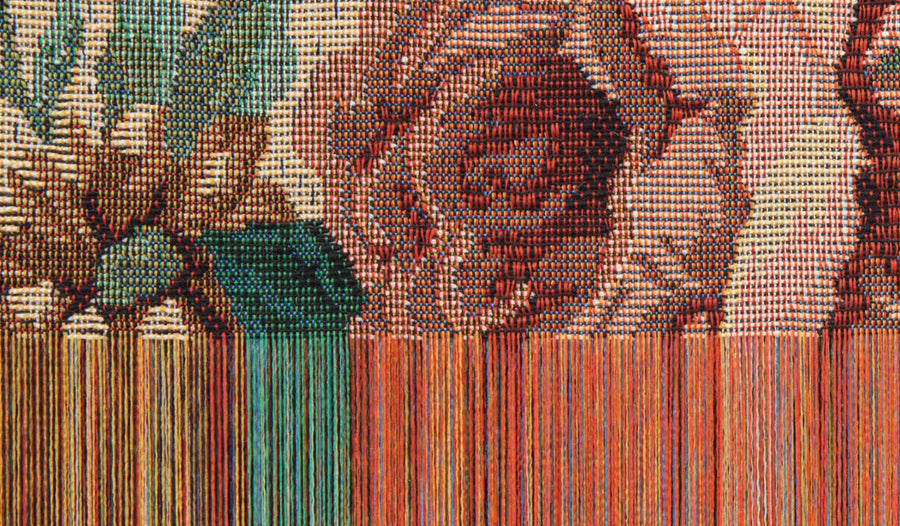
Things Fall Apart
 Image: Aiko Tezuko, Fragile Surface (detail), 2013-15 2013, unravelled fabric, wooden frame 65 x 40 cm
Image: Aiko Tezuko, Fragile Surface (detail), 2013-15 2013, unravelled fabric, wooden frame 65 x 40 cm
The outer surface of Aiko Tezuka’s wool-on-canvas embroidery, go home (1997), depicts a monochrome, stylised lotus flower. But this ostensible conventionality is dispelled on the reverse where the threads hang down in a shaggy, hair-like mass extending beneath the lower edge of the canvas. Tezuka made go home while a painting undergraduate in her native Tokyo and, despite this venture into textiles, she continued to study painting, completing a PhD in 2005. But even by then, thread had become her primary medium; ‘embroidery’, she states, ‘is a form of painting to me’.

Tezuka continues to embroider, but painting also informs the extraordinary work she produces, using her characteristic technique of unravelling the threads of patterned woven fabrics. This can be seen, for example, in Extracting Warp Threads–Five Colours, one of the works shown in her 2004 Osaka solo exhibition, ‘Aiko Tezuka: Outside of Modernism’. Five Colours comprises six circular panels of the same, readymade, floral fabric with warp threads of one colour extracted from adjacent lower sections of each panel, diluting the palette and distorting the pattern of the deconstructed areas. In contrast, the colours of the extracted threads, isolated from the mixed palette, take on a new vibrancy as they hang from the surface and flow, paint-like, down walls to pool on the floor. Tezuka explains that the fabric used for the work was woven only with the five colours (plus white) of the warp threads she extracted, and so ‘this work shows the painting structure as painters start painting with only primary colours’.

Tezuka’s artist statements make frequent references to deconstruction and to her interest in ‘both the surface that we can see and the layers that are normally invisible to us’. She speaks literally and metaphorically: ‘History, politics, books, people, speech, food, the entire world has the structure of fabric’, she says, and she has seen much of the world. After university, overseas study scholarships took her first to London and then to Berlin, where she has been based since 2011 and from where she has made numerous work trips abroad. This frequent exposure to cultural difference, influence and interaction, social inequality and the challenges of globalisation and mass consumption is reflected in her work. One example is the 2014-15 Certainty/Entropy series, a reflection on the multiculturalism of Singapore. For part of this Tezuka researched Peranakan textiles, Peranakan being the local culture of Singapore, derived from the comingling of Chinese immigrants and indigenous Malay people. Added to this synthesis, Tezuka noted among the textiles’ tropical pineapple and dragonfly motifs the continuing presence of British and Irish symbols, a legacy of colonialism. Her first sight of a Peranakan fabric presented, then, ‘a surprising reminder that its history is truly woven into the fabric’...
An excerpt from the article, Things Fall Apart: Vivienne Richmond Ties Up The Loose Ends of Aiko Tezuka’s Deconstructed Textiles in Selvedge Issue 102 Mend.
Aiko Tezuka’s solo exhibition Aiko’s B-side will be at Daikokuya Onsen Gallery, Tochigi, Japan, 2 - 29 September 2021
